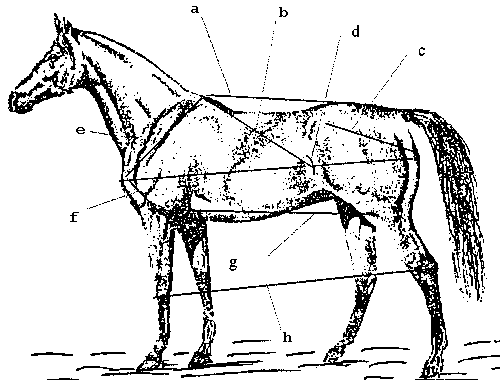A: The ATA requires that all horses applying for registration in any of its books be DNA tested. If the parentage of offspring is ever in question, the DNA results will be available even if the stallion or mare has died. DNA testing positively identifies the horse for identity protection of the breeders, owners and the association. No other system offers the same accuracy of identification as DNA typing.
A: Send $60 to the ATA office with a note requesting a DNA kit for your horse. List the horse’s name, sire, dam, dam’s sire, and birth date on the request.
A: The DNA kit is for a hair sample.
A: Sometimes the serology lab has the blood in their freezer. In this case the owner can pay for a “freezer pull” and DNA can be taken from the frozen blood sample. If the sample has been discarded (usually after ten years in the freezer), then the horse must be DNA tested using a hair sample.
A: No. We have an exclusive contract with the University of California at Davis to use their serology laboratory. They charge an extra fee to interpret results from other labs, which cancels out any savings you might have in using a local lab.
A: Either one is acceptable as long as you make sure you have the roots. Do not cut the hair with scissors. The DNA will be extracted from the roots. Be sure not to touch the roots with your bare hands or place them in contact with any other living organism as the DNA could become contaminated with other DNA.
A: The hair doesn’t have to be “super” clean. If you wipe off any heavy dirt and manure with a damp towel that should be acceptable. Do not touch the root follicles after pulling the hair.
A: To the University of California Serology Laboratory at Davis, CA. The address is included in the hair kit you purchase from our office.
A: We do not have time to notify owners when the results arrive. If that is the only component missing from your registration application, the application will be processed and you will receive your horse’s certificate shortly. If the lab notifies us of a problem, we will notify you immediately.
A: Results are received in the ATA office within 2 – 8 weeks after you submit the hair sample depending on sample volume at the serology lab.
A: The DNA test can be repeated or testing can be done against the DNA of another possible sire.
A: The foal can be tested to verify the sire without consideration of the dam. In that case, it will be eligible to receive Part-Trakehner registration papers regardless of the dam’s breed. It will be eligible for the ATA awards program but not for breeding approval.
If you make a habit of pulling hair on any horse that dies or that you sell, you may be able to avoid problems later. It is best to go ahead and DNA test your mare. If that is not possible, just store the hair sample in a plastic bag in a cool, dry location away from direct light in case you need it at a later date.

a – the back (withers to peak of croup)
b – the body (point of shoulder to point of buttock)
c – the pelvis (point of hip to point of buttock)
d – the rib length (withers to last rib)
e – the shoulder (withers to point of shoulder)
f – the arm (point of shoulder to point of elbow)
g – the elbow to the stifle
h – the knee to the hock